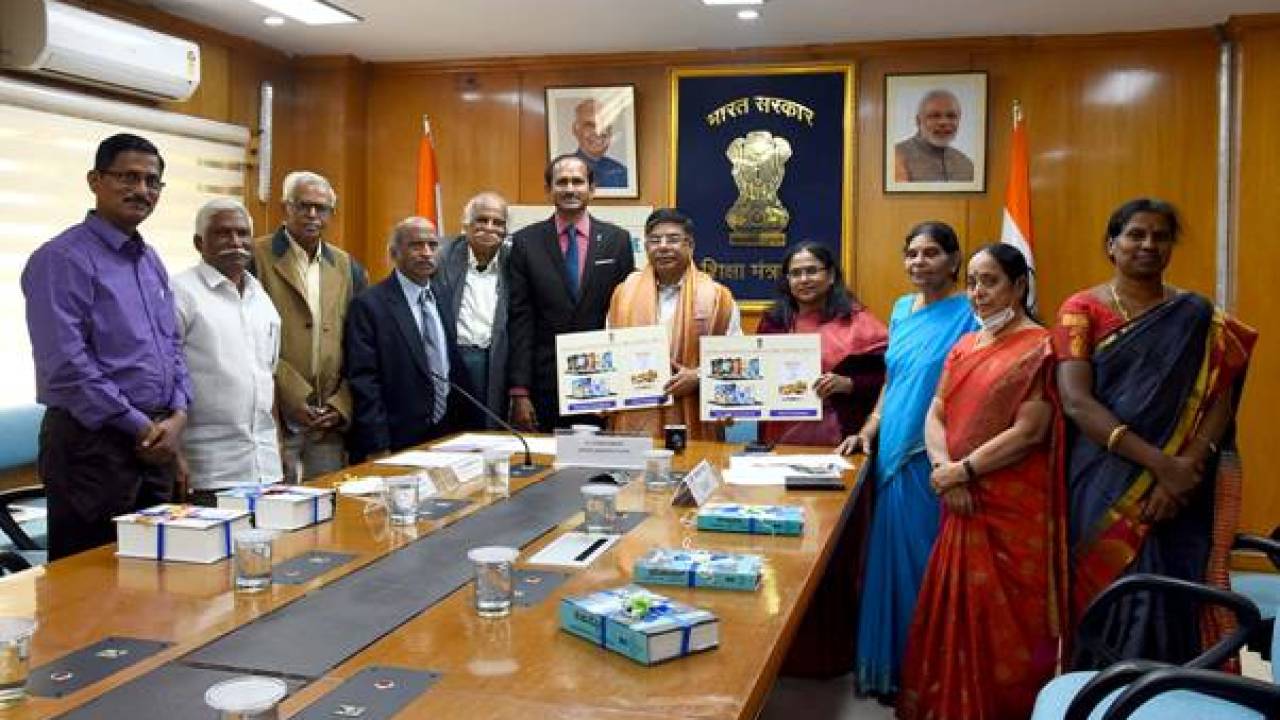
HINDI TRANSLATION OF TOLKĀPPIYAM (TAMIL LITERATURE)
Why in News
- Recently, the Minister of State for Education, released the Hindi translation of Tolkāppiyam and the Kannada translations of 9 books of Classical Tamil literature.
- Tamil literature goes back to the Sangam Era, named after the assembly (sangam) of poets.
Sangam Period:
- The period roughly between the 3rd century B.C. and 3rd century A.D. in South India (the area lying to the south of river Krishna and Tungabhadra) is known as Sangam Period.
- It has been named after the Sangam academies held during that period that flourished under the royal patronage of the Pandya kings of Madurai.
- At the sangams, eminent scholars assembled and functioned as the board of censors and the choicest literature was rendered in the nature of anthologies.
- These literary works were the earliest specimens of Dravidian literature.
- South India, during the Sangam Age, was ruled by three dynasties-the Cheras, Cholas and Pandyas.
Three Sangams:
- According to the Tamil legends, there were three Sangams (Academy of Tamil poets) held in the ancient South India popularly called Muchchangam.
- The First Sangam, is believed to be held at Madurai, attended by gods and legendary sages. No literary work of this Sangam is available.
- The Second Sangam was held at Kapadapuram, only Tolkappiyam survives from this.
- The Third Sangam was also held at Madurai. A few of these Tamil literary works have survived and are a useful source to reconstruct the history of the Sangam period.
Sangam Literature:
- The Sangam literature includes Tolkappiyam, Ettutogai, Pattuppattu, Pathinenkilkanakku, and two epics named – Silappathikaram and Manimegalai.
Tolkappiyam:
- It was authored by Tolkappiyar and is considered the earliest of Tamil literary work.
- Though it is a work on Tamil grammar, it also provides insights on the political and socio-economic conditions of the time.
- It is a unique work on grammar and poetics, in its three parts of nine sections each, deals with Ezhuttu(letter), Col (word) and Porul (subject matter).
- Almost all levels of the human language from the spoken to the most poetic lie within the purview of Tolkappiyar’s analysis as he treats in exquisitely poetic and epigrammatic statements on phonology, morphology, syntax, rhetoric, prosody and poetics.
Ettutogai (Eight Anthologies):
- It consists of eight works – Aingurunooru, Narrinai, Aganaooru, Purananooru, Kuruntogai, Kalittogai, Paripadal and Padirruppatu.
- Pattuppattu (Ten Idylls): It consists of ten works – Thirumurugarruppadai, Porunararruppadai, Sirupanarruppadai, Perumpanarruppadai, Mullaippattu, Nedunalvadai, Maduraikkanji, Kurinjippatttu,Pattinappalai and Malaipadukadam.
Pathinenkilkanakku:
- It contains eighteen works about ethics and morals.
- The most important among these works is Tirukkural authored by Thiruvalluvar, the tamil great poet and philosopher.
Tamil Epics:
- The two epics Silappathikaram is written by ElangoAdigal and Manimegalai by SittalaiSattanar.
- They also provide valuable details about the Sangam society and polity.
